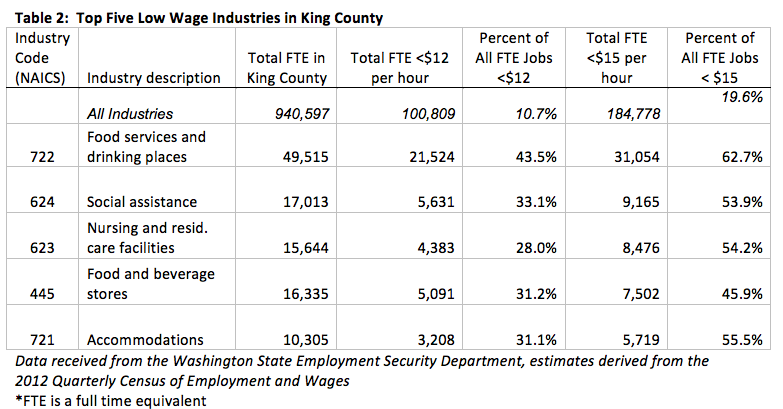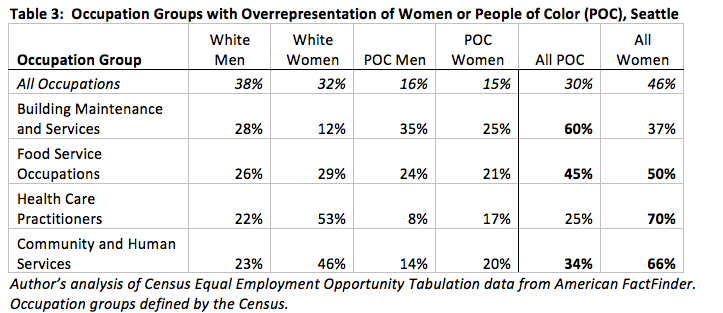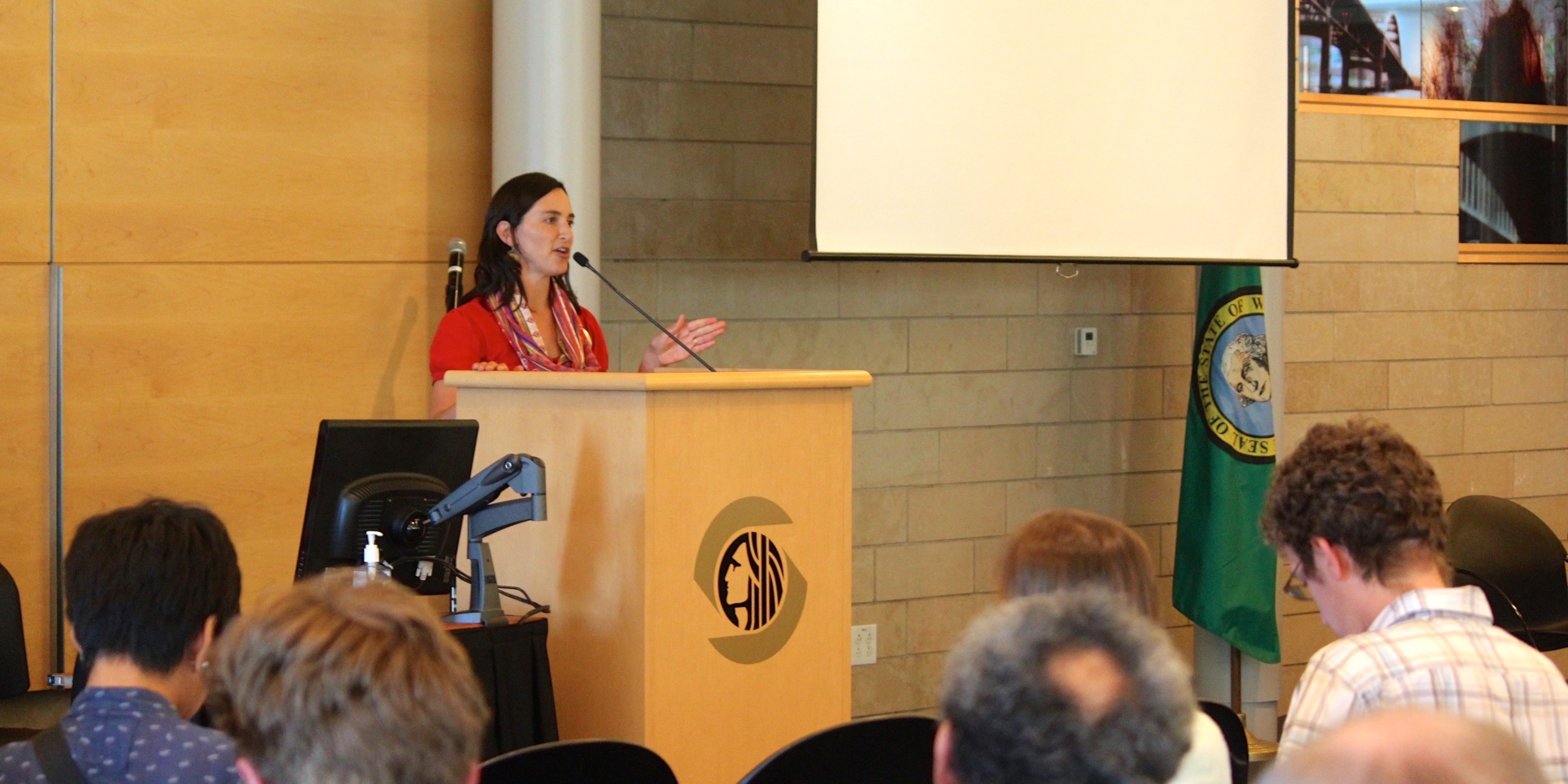Seattlites were deeply unsettled last year when a national study revealed that our metro area has one of the largest gender pay gaps in the country. Action was called for by Mayoral candidates after an internal City study was released. Perhaps less surprising, Seattle also has a large race pay gap, something Sage researchers have been reporting for years. But we have some good new too – action may be around the corner that reduces both race and gender income inequality – an increase to the minimum wage for Seattle workers. Here’s why:
If you are a woman or a person of color living in Seattle, you are likely to earn between 44% and 71% of what white men earn. On the low end, median earnings for black or African women is $23,000, nearly half that of white men at $52,000. Black or African men fare little better, with median earnings of $24,000. Across race and ethnicity, except for Native Americans, women earn less than men, a difference more pronounced for white women than women of color.

The reasons for these gaps have been studied for decades, and one of the biggest drivers is occupational segregation: people of color and women are more likely to work in fields or jobs that simply pay less. A recent national report on the gender pay gap shows that segregation by occupation and industry accounts for nearly 50% of disparity in earnings.
Our analysis of Census data and data from the Employment Security Department shows that over-representation of women and people of color in low-wage industries likely explains much of the pay gap for women and people of color in our region. For example, in food service across King County, nearly 63% of workers earn below $15 an hour. People of color comprise 45% of those low-wage workers, despite making up 30% of Seattle’s total workforce.
The two charts below highlight the link between low-wage industries and who works in them. Table 2 shows the top five low wage industries in King County by two wage thresholds ($12 an hour and $15 an hour).

Table 3 further shows that people of color and women are over represented in the occupations common in these low wage industries.
 Raising the minimum wage in Seattle will provide a bigger earnings boost for both women and people of color. Based on sheer numbers, few policies available to a city like Seattle could do more to reduce race and gender income inequality.
Raising the minimum wage in Seattle will provide a bigger earnings boost for both women and people of color. Based on sheer numbers, few policies available to a city like Seattle could do more to reduce race and gender income inequality.
2006-2010 American Community Survey, B20002. We used 2010 census data, as a more recent breakdown by race and gender was not available on AmericanFactFinder





